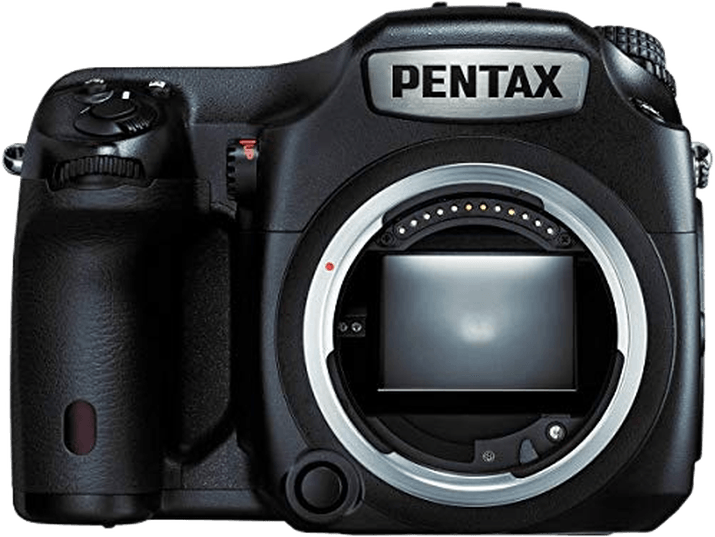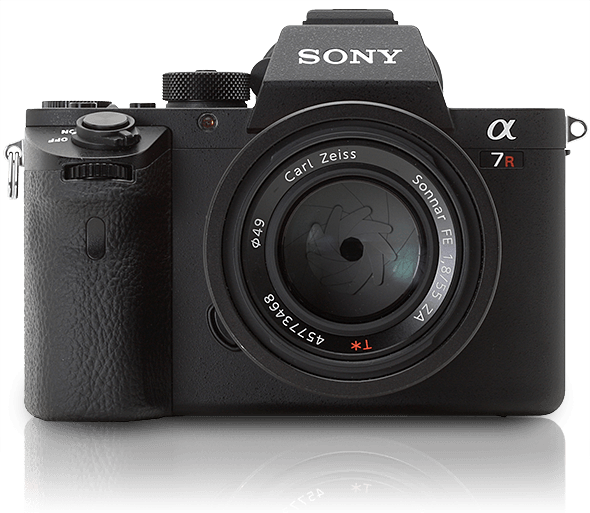Pentax 645Z vs Sony a7R II Comparison
Pentax 645Z

Sony a7R II

The Pentax 645Z emerges as the winner with a score of 73/100, while the Sony a7R II trails closely with a score of 70/100. Both cameras share similarities like their release in the mid-2010s and being high-end professional cameras. However, there are key differences that set them apart.
The Pentax 645Z, a DSLR, boasts a larger body (156 x 117 x 123mm) and heavier weight (1550g), which could be advantageous for stability during shoots. On the other hand, the Sony a7R II, a mirrorless camera, offers a more compact size (127 x 96 x 60mm) and lighter weight (625g), making it more travel-friendly and convenient for photographers on the go.
While the Pentax 645Z may be more expensive at $8499 than the Sony a7R II at $3198, it justifies its higher price with better performance in certain aspects. However, the Sony a7R II remains a strong contender, offering a great balance between quality and portability.
Pentax 645Z vs Sony a7R II Overview and Optics
The Sony a7R II wins the optics comparison with a score of 81/100, compared to the Pentax 645Z’s score of 79/100. Both cameras share similarities in their specifications, such as having a CMOS sensor type and offering high-resolution images with 51.4 megapixels for the Pentax 645Z and 42.4 megapixels for the Sony a7R II. Additionally, both cameras have a fast processor, with the Pentax 645Z using Prime III and the Sony a7R II using Bionz X.
The Sony a7R II excels in several areas. It has a higher shooting speed of 5 compared to the Pentax 645Z’s 3, allowing for faster image capture. The Sony a7R II also has image stabilization, which the Pentax 645Z lacks. This feature helps reduce camera shake and improve image quality. Furthermore, the Sony a7R II’s full-frame sensor size and Sony FE lens mount provide more versatility in lens choices.
On the other hand, the Pentax 645Z has a few advantages. Its medium format sensor size captures more detail and produces better image quality. The Pentax 645Z also has a higher DXOMARK score for the sensor at 101, compared to the Sony a7R II’s score of 98. The Pentax 645AF2 lens mount, while not as versatile as the Sony FE mount, offers high-quality lenses specifically designed for medium format cameras.
Taking these factors into account, the Sony a7R II is better suited for photographers who prioritize shooting speed, image stabilization, and lens versatility. However, the Pentax 645Z is an excellent choice for those who value image quality and detail, thanks to its medium format sensor and higher DXOMARK score.
Pentax 645Z vs Sony a7R II Video Performance
The Pentax 645Z outperforms the Sony a7R II in video capabilities, scoring 70/100 compared to the Sony’s 56/100. Both cameras share some common video specifications, but each has its own advantages.
Both the Pentax 645Z and the Sony a7R II have Full HD video resolution. However, the Pentax 645Z has a maximum video frame rate of 60fps, while the Sony a7R II has a maximum frame rate of 30fps. This means that the Pentax 645Z can capture smoother and more detailed videos. Additionally, the Pentax 645Z has built-in time-lapse functionality, which the Sony a7R II lacks. This feature allows the Pentax 645Z to create stunning time-lapse videos without the need for additional equipment or software.
On the other hand, the Sony a7R II offers 4K video resolution, with maximum video dimensions of 3840 x 2160. This is a higher resolution than the Pentax 645Z, which has a maximum video dimension of 1920 x 1080. The Sony a7R II’s 4K resolution can produce sharper and more detailed videos than the Pentax 645Z’s Full HD resolution.
Taking these factors into account, the Pentax 645Z is the better choice for those who prioritize smooth, high frame rate videos and built-in time-lapse functionality. However, the Sony a7R II is the better choice for those who value higher video resolution and detail. Ultimately, the choice between these two cameras depends on the specific video requirements and preferences of the user.
Pentax 645Z vs Sony a7R II Features and Benefits
The Pentax 645Z triumphs over the Sony a7R II in features with a score of 59 out of 100, compared to the Sony’s 57. Both cameras share several specifications, including the lack of a touchscreen, GPS, and Bluetooth. They also both feature flip screens and Wi-Fi connectivity.
The Pentax 645Z outperforms the Sony a7R II in terms of screen size, boasting a 3.2-inch screen compared to the Sony’s 3-inch screen. This larger screen allows for easier navigation and better viewing of captured images. Despite the Sony a7R II having a higher screen resolution of 1,228,800 dots compared to the Pentax 645Z’s 1,037,000 dots, the difference in resolution does not significantly impact the overall user experience.
On the other hand, the Sony a7R II’s higher screen resolution does provide slightly sharper and clearer image previews. This advantage can be beneficial for photographers who require precise focus and composition in their images. However, this improvement in resolution is not enough to surpass the Pentax 645Z’s overall feature score.
When comparing the Pentax 645Z and Sony a7R II, the Pentax 645Z proves to be the superior camera in terms of features, mainly due to its larger screen size. The Sony a7R II’s higher screen resolution offers a minor advantage, but it is not enough to outshine the Pentax 645Z.
Pentax 645Z vs Sony a7R II Storage and Battery
The Pentax 645Z surpasses the Sony a7R II in storage and battery with a score of 65/100 versus 16/100. Both cameras accept SD, SDHC, and SDXC memory cards. However, the Pentax 645Z has two memory card slots, while the Sony a7R II only has one. Additionally, the Sony a7R II supports Memory Stick Duo, Pro Duo, and Pro-HG Duo cards.
The Pentax 645Z outperforms the Sony a7R II in battery life, offering 650 shots with its D-LI90 battery compared to the Sony a7R II’s 290 shots using the NP-FW50 battery. Neither camera provides USB charging.
Despite its lower score, the Sony a7R II’s compatibility with Memory Stick cards may be an advantage for some users. However, the Pentax 645Z’s longer battery life and extra memory card slot make it the better option for storage and battery capabilities.
Pentax 645Z vs Sony a7R II – Our Verdict
Are you still undecided about which camera is right for you? Have a look at these popular comparisons that feature the Pentax 645Z or the Sony a7R II:

